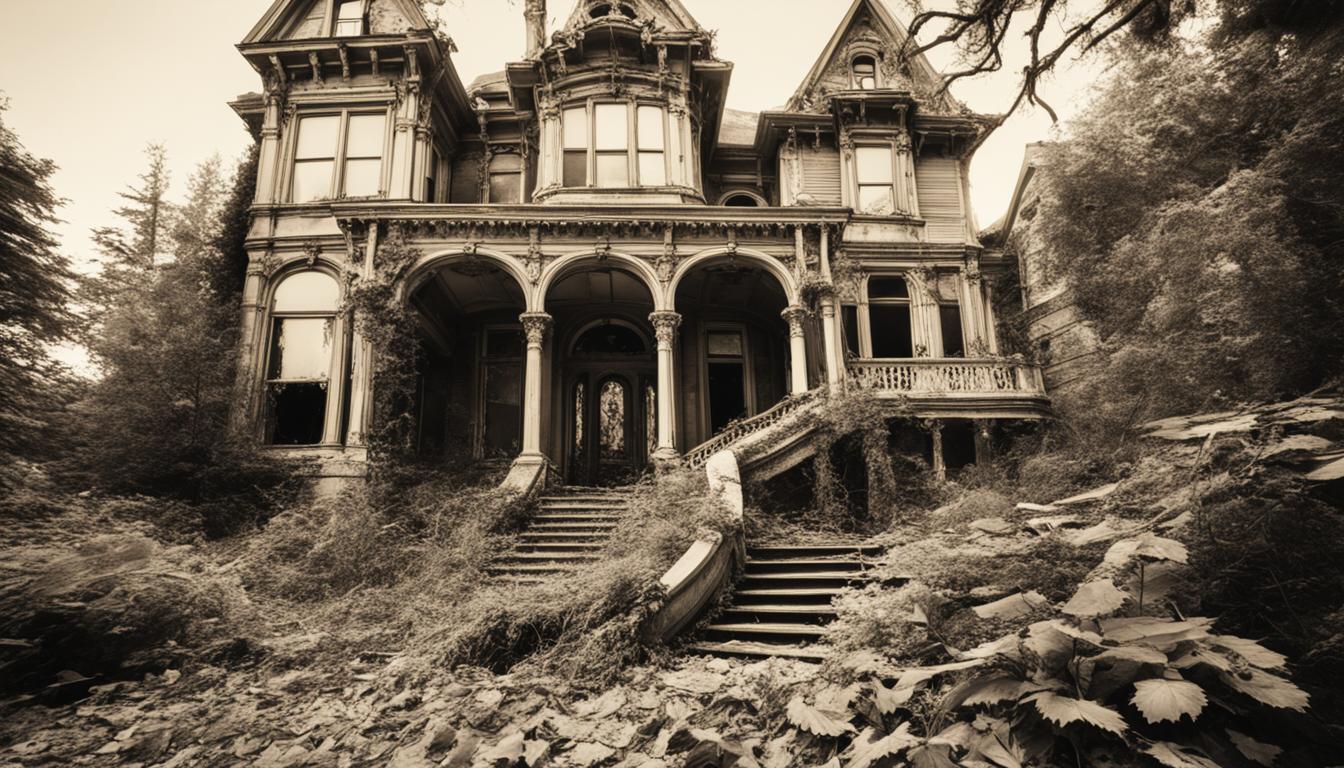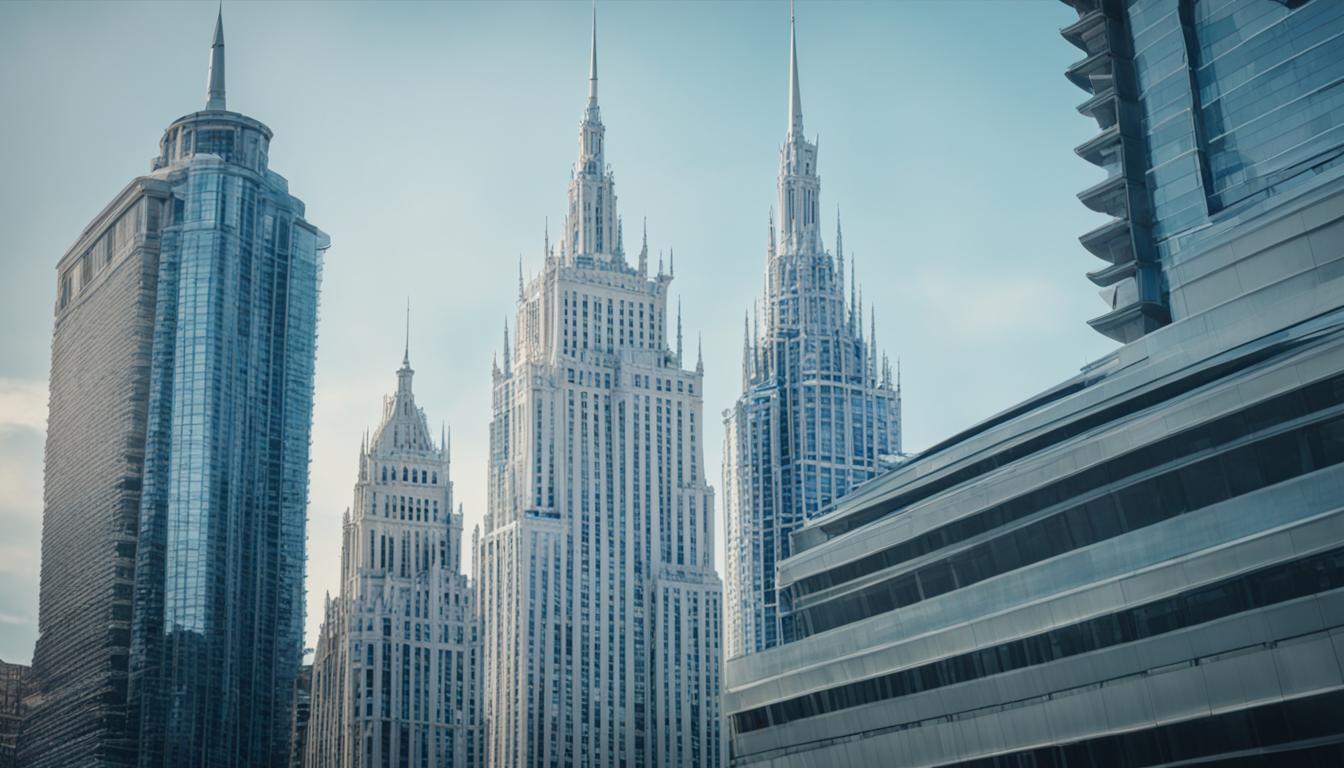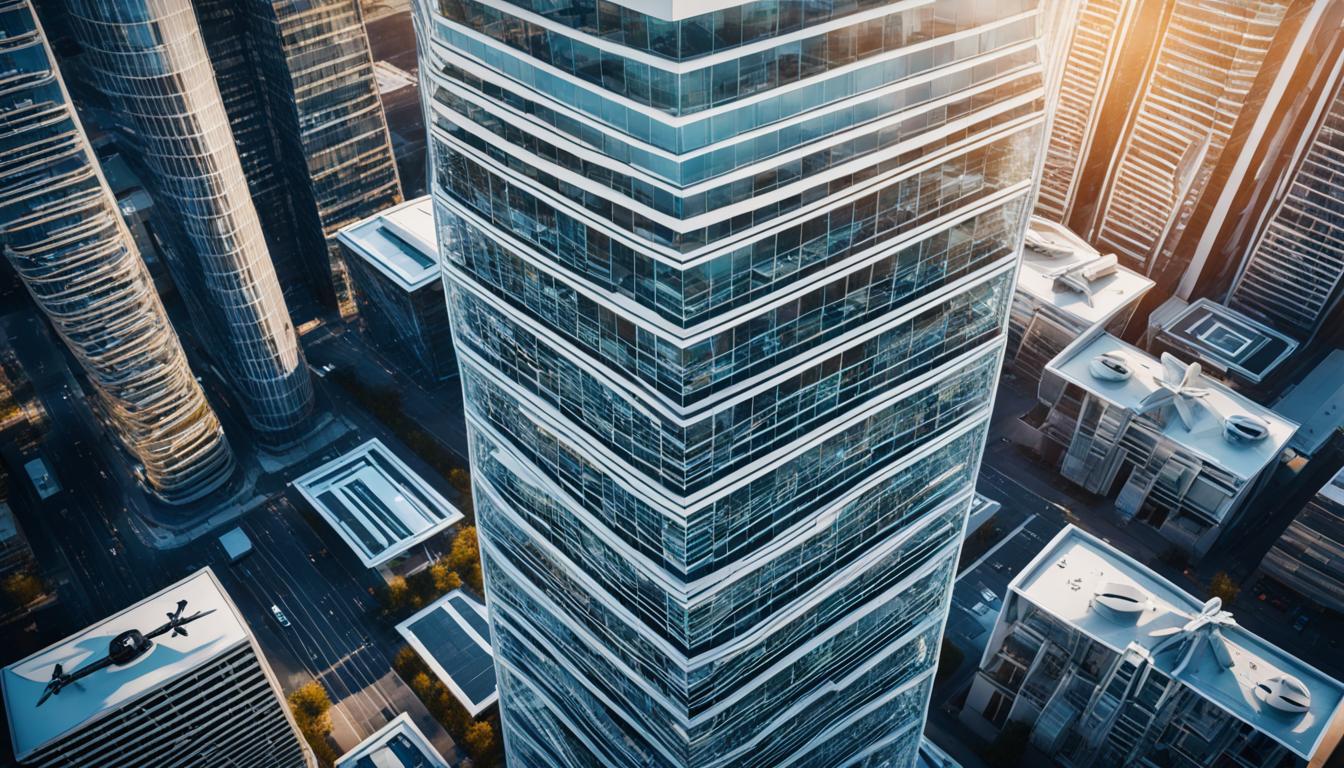In the world of visual storytelling, photography stands as a universal language that transcends boundaries and immortalizes memories. It communicates emotions and captures the essence of culture and history. Photography freezes moments in time, preserving the narratives, emotions, and intricacies of specific cultures and heritage sites. It bridges cultural divides, fosters empathy, and breaks down barriers. A photograph becomes a time capsule, transporting us to cherished moments and revealing the unseen. It has the power to capture the beauty of humanity, the shared experiences, the endurance of traditions, and the unspoken connections that unite us all.
Key Takeaways:
- Historical and cultural heritage photography captures the essence of specific cultures and heritage sites.
- Photography serves as a universal language that communicates emotions and breaks down cultural barriers.
- Photography acts as a time capsule, preserving cherished moments and revealing unseen stories.
- Through photography, the beauty of humanity and the endurance of traditions can be captured.
- Photography bridges cultural divides and fosters empathy by showcasing the shared experiences and connections that unite us all.
The Universal Language of Images
Photography, at its core, communicates a language understood by all. It requires no translation, and its messages are universally comprehensible. It freezes moments in time, preserving the narratives, emotions, and intricacies of specific cultures and heritage sites. Photography captures the lively streets of culturally rich locations, the vibrant scenes and rituals that become an integral part of daily life. It documents the evocative moments of local markets and the harmonious rhythm of traditional ceremonies. Through the lens, photographers can document these moments, capturing the essence of places that breathe history and tradition.
Photography freezes moments in time, preserving the narratives, emotions, and intricacies of specific cultures and heritage sites.
Photography has the power to capture culture and stories in a way that transcends language barriers. Whether it’s a bustling market in Marrakech, a centuries-old temple in Kyoto, or a traditional dance performance in Peru, photography allows us to document and preserve the richness of diverse cultures for generations to come. It breathes life into history and tradition, giving us a visual archive of the past and a deeper understanding of the present.
Preserving Narratives and Documenting Traditions
Through photography, we can document the stories and traditions that shape our world. It captures the soul of a place, revealing moments that might otherwise go unnoticed. Photographers have the unique ability to freeze a split second in time, capturing the essence of a culture and the stories of its people.
- Preserving narratives: Photography immortalizes cultural narratives and ensures that they are not forgotten.
- Capturing culture and stories: Photographs breathe life into cultural traditions and capture the stories of the people who practice them.
- Documenting traditions: Through photography, traditions are documented and shared with the world, creating a visual record of our collective heritage.
Photography captures the lively streets of culturally rich locations, the vibrant scenes and rituals that become an integral part of daily life.
Photography not only captures culture and stories, but it also gives us a glimpse into the daily lives of people around the world. It reveals the small moments, the gestures, and the expressions that make up the fabric of a society. These images serve as a bridge between cultures, allowing us to connect on a human level and develop a deeper appreciation for our shared humanity.
Breathe History and Tradition
Photography acts as a time capsule, preserving history and tradition for future generations. It allows us to look back and reflect on the journeys of those who came before us. Through photographs, we can gain insights into the evolution of cultures and the changes that have shaped our world.
- Freezing moments in time: Photography freezes moments, allowing us to revisit them and gain a deeper understanding of the past.
- Capturing the essence of traditions: Through photographs, we can capture the essence of traditions and customs that have been passed down through generations.
- Preserving history and tradition: By documenting history and tradition, photography ensures that they are not lost or forgotten.
As we navigate through a rapidly changing world, photography remains a powerful tool for preserving our history, celebrating our cultures, and understanding the stories that make us who we are. It invites us to embark on a visual journey, breathing life into the narratives and traditions that shape our shared human experience.
Building Cultural Bridges
Photography possesses the remarkable ability to bridge cultural divides. It allows us to step into the shoes of others, understand their joys and sorrows, and celebrate their traditions. Through photography, cultural exchange becomes possible as photographers capture the stories of the people they meet. Their faces, etched with wisdom and resilience, tell tales of generations, preserving cultural legacies. Photography fosters empathy, transcending preconceived notions, and breaking down barriers that separate us. Whether in bustling marketplaces or quiet corners, photography immerses us in the intricate tapestry of cultures.
Step into the Shoes of Others
Photography enables us to step into the shoes of others, placing ourselves in their unique perspectives. As we look through the lens, we gain a deeper understanding of their experiences, traditions, and the beauty they hold dear. It allows us to see the world through their eyes, forging a connection that transcends differences and fosters a sense of empathy.
Celebrate Traditions and Cultures
By capturing the rich tapestry of traditions and cultures through photography, we have the opportunity to celebrate and appreciate the diversity that enriches our world. From vibrant festivities to daily rituals, photographs allow us to witness and honor the customs and heritage that define different communities.
“Photography has the power to capture the essence of a culture, preserving its unique traditions and documenting its living history. It serves as a visual testament to the resilience and vibrancy of different communities.”
Break Down Barriers & Foster Cultural Exchange
Photography breaks down barriers, opening doors to cultural exchange. Through the lens, photographers become storytellers, capturing the essence of individuals and communities. As these visual narratives are shared, they create opportunities for dialogue, understanding, and appreciation, fostering a sense of connection and unity that goes beyond cultural boundaries.
Preserve Cultural Legacies
Photography plays a vital role in preserving cultural legacies for future generations. It documents the customs, artifacts, and practices that shape a community’s identity, ensuring that their heritage and traditions are not lost to time. Each photograph becomes a valuable piece of the cultural puzzle, contributing to the collective memory and ensuring that rich traditions endure.
Cultural Bridges Through Photography
| Benefits | Description |
|---|---|
| Increase Understanding | Photography allows us to step into the shoes of others, fostering empathy and increasing our understanding of different cultures. |
| Promote Cultural Exchange | Photographers capture the stories of people from different cultures, creating opportunities for dialogue and fostering cultural exchange. |
| Celebrate Traditions | Through photography, we can document and honor the diverse traditions that make up our global heritage. |
| Break Down Barriers | Photography transcends boundaries, breaking down barriers that separate us and fostering a sense of connection. |
| Preserve Cultural Legacies | Photography serves as a visual archive, preserving cultural legacies and ensuring they are passed down to future generations. |

Photography as a Time Capsule
A photograph is more than just a snapshot; it’s a time capsule that transports us to cherished moments and historical events. Through the lens of a camera, we can journey back in time and witness the evolution of cultures and the essence of living traditions. Photography has the power to capture the vibrant customs and customs that have shaped our world, preserving them for future generations to experience and appreciate.
When we look at a photograph, we are transported to a specific moment, reliving the emotions and experiences captured within the frame. Whether it’s a candid shot capturing a vibrant celebration or a striking image chronicling a pivotal event in history, each photograph tells a story that goes beyond words. It captures the essence of traditions and customs, giving us a glimpse into the rich tapestry of human existence.
In historical cities, photography serves as a vital tool for documenting cultural heritage. Through the lens, photographers can capture the essence of traditions that have withstood the test of time. From ornate ceremonies to traditional rituals, these photographs become a treasure trove of living history, preserving a cultural legacy that continues to thrive in contemporary times.
Through the power of photography, we can witness the evolution of cultures. As traditions and customs adapt to the changing world, photographs allow us to see the threads of continuity that connect the past, present, and future. By capturing the essence of traditions and customs, photography ensures that our cultural heritage remains alive and celebrated.
The Evolution of Cultures
Photography captures the spirit of a people, revealing their traditions, customs, and the beauty of their daily lives.
Photography not only freezes moments in time but also offers us a glimpse into the evolution of cultures. It allows us to witness the transformation of societies, capturing the changes in dress, architecture, and ways of life. From vintage photographs showcasing past traditions to contemporary images reflecting the fluidity of culture, photography documents the passage of time and preserves cultural heritage.
Preserving Living Traditions
Photography immortalizes the beauty of customs and traditions, ensuring that they endure and continue to inspire future generations.
Living traditions are an integral part of a culture’s identity. They provide a sense of belonging, passing down customs and rituals from one generation to the next. Photography plays a crucial role in capturing the essence of these traditions, preserving them for future generations. By documenting the beauty and richness of customs, photography ensures that these living traditions are celebrated and cherished for years to come.
| Benefits of Photography as a Time Capsule |
|---|
| Transport us to cherished moments |
| Preserve historical events |
| Capture the evolution of cultures |
| Immortalize living traditions |
| Capture the essence of customs and traditions |
Revealing the Unseen
Photography has the power to unveil the unseen, offering insights into hidden worlds that often escape the casual observer. It allows us to uncover stories concealed beneath the surface of daily life. Through the lens, photographers venture off the beaten path to reveal the essence of daily life in quiet alleys and tucked-away corners of bustling cities. Among weathered facades and vibrant street scenes, they encounter individuals who radiate resilience and warmth. Through their stories and smiles, they discover the spirit of a people whose strength transcends adversity.

Insights into Hidden Worlds
Photography takes us on a journey beyond the surface, unveiling a world often hidden from the naked eye. Scenes that may go unnoticed in the busyness of daily life are captured in breathtaking detail, revealing the intricate beauty and raw emotions that lie within. From the hidden markets of Marrakech, where vibrant spices tantalize the senses, to the quiet dwellings of rural communities, where ancestral traditions are preserved, photography invites us to explore the lesser-known corners of our shared world.
Capturing the Essence of Daily Life
Through the lens, photographers have the extraordinary ability to capture the essence of daily life. They freeze moments in time that encapsulate the experiences, emotions, and rituals of a community. From the laughter shared between friends in a bustling metropolis to the quiet contemplation of a fisherman at dawn, photography documents the myriad facets of daily existence. It invites us to peer into the lives of others, fostering a deeper understanding and appreciation of the richness and diversity of human experience.
“Photography is a way of feeling, of touching, of loving. What you have caught on film is captured forever…it remembers little things, long after you have forgotten everything.”
– Aaron Siskind
The Spirit of a People
Photography goes beyond mere documentation; it captures the very spirit of a people. Every smile, every furrowed brow, every creased hand tells a story of resilience, strength, and endurance. It reminds us that the human spirit is boundless and that, even in the face of adversity, there is a wellspring of hope and determination. The lens becomes a conduit through which we connect with individuals who inspire us and embody the triumph of the human spirit.
Revealing the Unseen
Through the art of photography, hidden worlds are unveiled, offering a glimpse into the lives and experiences that shape a culture. It is a powerful medium that invites us to question, to explore, and to broaden our understanding of the world. With each click of the shutter, photographers reveal the hidden depth of daily life and ignite our curiosity, showing us that there is always more than meets the eye.
| Keyword | Definition |
|---|---|
| Photography unveils unseen | Photography exposes hidden aspects of life and allows us to see what might otherwise go unnoticed. |
| Insights into hidden worlds | Photography offers unique perspectives and allows us to gain a deeper understanding of lesser-known aspects of society. |
| Reveal essence of daily life | Photography captures the true nature and authenticity of daily experiences and routines. |
| Spirit of a people | Photography captures the resilience, culture, and character of a community or society. |
| Strength transcends adversity | Photography showcases the indomitable spirit and resilience of individuals in the face of challenges. |
Conclusion
As we reflect on the power of photography, it becomes evident that it holds the ability to capture culture and stories in a way that is truly remarkable. Photography serves as a universal language, transcending barriers and allowing us to preserve legacies. Through the lens, we are able to bridge cultural divides and celebrate the rich traditions that define different communities around the world.
Photography goes beyond simply capturing moments. It has the power to document traditions, revealing the unseen and providing a glimpse into the everyday lives of individuals from diverse backgrounds. Each photograph becomes a time capsule, preserving the essence of a culture and serving as a window into history.
Whether it’s the vibrant scenes of bustling markets, the solemn rituals of traditional ceremonies, or the quiet moments of shared humanity, photography has the ability to transport us to a world of emotions, experiences, and untold stories. It is through the lens of a camera that we can truly appreciate the power of photography as a form of visual storytelling.
FAQ
What is historical and cultural heritage photography?
Historical and cultural heritage photography is a genre of photography that focuses on capturing the essence of specific cultures and heritage sites. It documents the traditions, customs, rituals, practices, and daily life of diverse communities, preserving their narratives and legacies for future generations.
What is the significance of heritage photography?
Heritage photography plays a crucial role in preserving cultural and historical legacies. It freezes moments in time, documenting the evolution of cultures and capturing the beauty of humanity. It bridges cultural divides, fosters empathy, and breaks down barriers by enabling cultural exchange and understanding.
How does heritage photography bridge cultural divides?
Heritage photography allows us to step into the shoes of others, understand and appreciate their joys and sorrows, and celebrate their traditions. Through photographs, we can encounter individuals from different cultures, fostering empathy and breaking down the barriers that separate us.
What is the role of heritage photography in preserving cultural legacies?
Heritage photography is a powerful tool for preserving cultural legacies. It captures the essence of traditions, customs, rituals, and practices that have endured through the ages. Through photography, these cultural legacies continue to thrive and are immortalized, ensuring they are passed down to future generations.
How does heritage photography reveal the unseen?
Heritage photography offers insights into hidden worlds and stories that often escape the casual observer. Photographers venture off the beaten path to reveal the essence of daily life in culturally rich locations. They uncover the spirit and resilience of a people, capturing their stories and smiles, and shedding light on aspects of culture that may go unnoticed.
What is the power of photography in capturing culture and stories?
Photography serves as a universal language that captures the beauty of humanity, communicates emotions, and documents culture and history. It has the ability to freeze moments in time, preserving narratives and creating a legacy that transcends borders. Photography allows us to immerse ourselves in the experiences, emotions, and untold stories of diverse cultures.
How Can Historical and Cultural Heritage Photography Benefit from HDR Techniques in Architecture Photography?
When capturing historical and cultural heritage sites, utilizing HDR techniques in architecture photography can bring out intricate details and textures. The best tips for architecture photography involve bracketing exposures and merging them to create stunning images with rich tonal range, ideal for showcasing the beauty of these significant landmarks.




